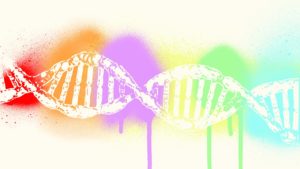One of the most trying and anxious moments for patients is when they wait for diagnosis from doctors, and nothing is more devastating than hearing that you have an incurable disease. This is a scenario that many people around the world experience and continue to live through, but the good news is that the number of incurable diseases are slowly decreasing as medical technology advances. For a long time, Mucopolysaccharidoses II, also known as MPS II or Hunter syndrome, has been among one of the incurable disease but that may no longer be the case. On November 13th, 2017 – a Brian Madeux was cured of Hunter syndrome through an experimental in-body gene therapy procedure in the first known instance of human testing. Thus far, it seems like he has been cured of the disease that has haunted him for the past 44 years, but he is still being actively monitored to verify that the cure is completely successful. The importance of this revolutionary treatment cannot be understated, as it signals the beginning of revolutionary treatment options and the end of certain genetic illnesses such as Hunter syndrome and hemophilia B.
To help us understand the implications of gene therapy will be Dr. Imran Haque, an internist and general practitioner based out of North Carolina. He is looking forward to hearing more about the continued results of Madeux’s treatment, and believes that a successful gene therapy treatment will usher in a surge of treatment plans for previously incurable diseases. To help us understand how gene therapy can fill in the gaps of modern medicine, Dr. Imran Haque will be leveraging his extensive experience of over 15 years as a doctor to explain how the gene therapy can solves problems in patients that current practices cannot address and how it will ultimately lead to more effective medicine.
What is Gene Therapy?
It’s important to recognize that gene therapy is not CRISPR, but the two procedures do seem similar from a high level. Much like CRISPR, gene therapy is an experimental technique that looks to treat or prevent diseases by modifying the patient’s genes in some way, whether it’s replacing a mutated gene with a healthy copy, removing out a malfunctioning gene, or introducing a new gene into the body to fight illnesses. The key difference is how the change is made – gene therapy makes changes in human genes by leveraging naturally occurring proteins called zinc finger DNA-binding proteins, or zinc finger technology for short. The current process is delivered through a benign virus, which acts as a carrier for the zinc finger technology. However, it’s important to realize that gene therapy in its current incarnation needs to be absolutely perfect on the first try – the procedure will only work once since the it is being delivered through a virus. Subsequent attempts will see that the human body categorized the delivery virus as a threat, and it will be wiped out before it can make any genetic changes. Dr. Imran Haque points out that the delivery system makes follow-up procedures nearly impossible, which means the first batch needs to precisely edit the correct portion of DNA and target the correct genes out of the 30,000 in the human body. Due to this limitation, the FDA has been wary about approving the procedure for humans -– in fact, the procedure has had only one human test, which is Brian Madeux.
Why Test Gene Therapy on Hunter Syndrome?
Brian Madeux was selected as the first test subject for gene therapy due to the nature of his disease: Hunter syndrome. At the core, Hunter syndrome is caused by a fairly simple genetic change – a mutation in a single gene is the root cause for the illness, which will cause the body’s cells to rapidly break down due to the inability to get rid of waste. Hunter syndrome affects the entire body, and can result in a bevy of physical symptoms such as hearing problems, joint malfunction, and breathing difficulties. Most patient’s never reach 20 years of age and there is no cure today. Gene therapy was chosen for Hunter syndrome because the fix is theoretically simple – editing the mutate gene should solve the problem, which means the invasiveness of the gene therapy procedure is not too large. Madeux’s gene therapy solution looked simple too – a short IV drop that delivers the zinc finger technology into his body and then he is theoretically cured. Dr. Imran Haque believes that gene therapy has tremendous opportunities in the realm of genetic illnesses, as it can offer hope and treatment to incurable genetic diseases today. However, the viability of pursuing these treatments is entirely contingent on FDA approval, which means demonstrating that success is possible in a single dose is the best case to ensuring that gene therapy exists in the future.
The Future of Gene Therapy
Gene therapy is still very much a young procedure, and the process could see changes in the future. The largest drawback to gene therapy is the one-shot delivery system. In fact, the majority of gene therapy options being researched today rely on the same viral delivery mechanism, which means that not only are subsequent treatments are impossible, but gene therapy options for other new genetic disorders are not possible if the patient already received the procedure once. Dr. Imran Haque hopes that gene therapy will mature so that more delivery options become available and remain cost effective so that subsequent treatments are an option. The good news is that gene editing techniques have seen a tremendous number of breakthroughs recently, with the new techniques being discovered such as CRISPR or base genome pair editing. It is not out of the question that gene therapy will find innovation again. Most importantly, gene therapy introduces a technique that can address previously incurable diseases. Over time, the hope is that more and more diseases will find either a first solution, or have a much more effective solution introduced by gene therapy – which will ultimately lead to more effective medicine in the future.
Dil Bole Oberoi







